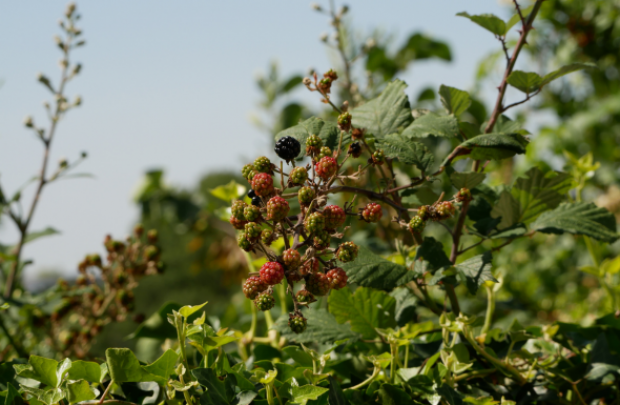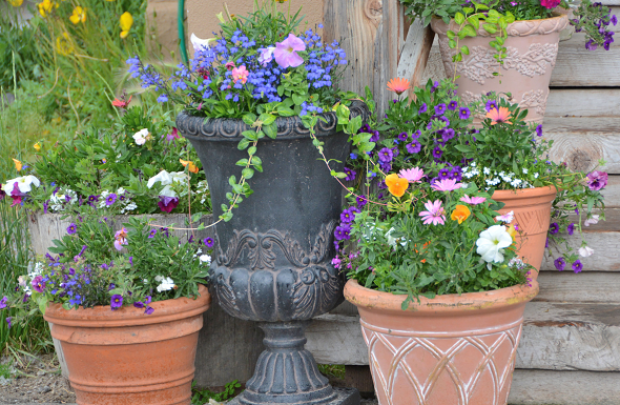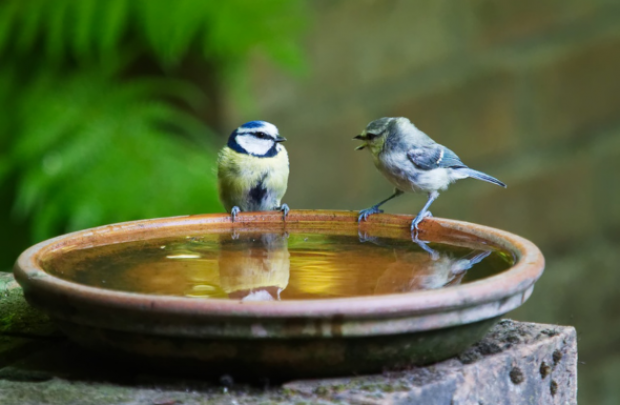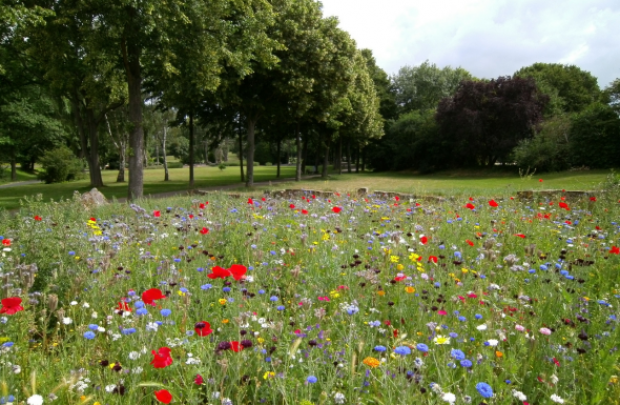Wildlife in winter
Written by Amber Jepson, volunteer and student at Bangor University
As the magical time of winter comes around, we start to see a dramatic change in weather, bringing in much colder temperatures, the emphasis on green evergreen trees compared with the bare deciduous trees, and the potential to enjoy snowfall during the festive season.
Winter species and migration
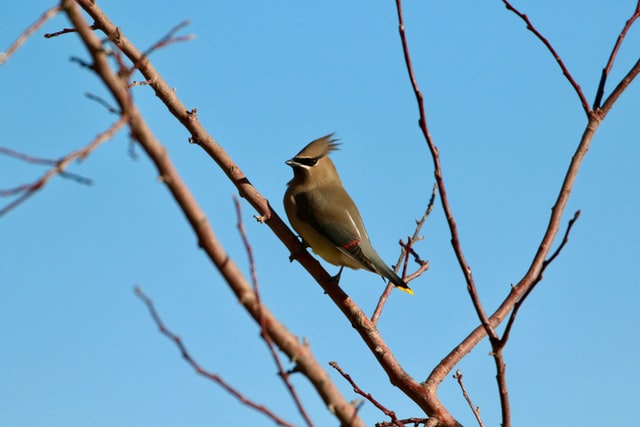
With the changing season, it brings along various species that migrate to the UK to enjoy its milder winters, compared with the brutal winters experienced in the North.
One species of which is a true spectacle when gathered in their mass flight, is the starling. Although this species is in great decline, their yearly murmuring ritual can be observed every winter in the UK, as they swirl across the night sky together, before they bed down for the night.
Ornithologists theorise that the starlings perform this behaviour to communicate to each other where would be best to forage for food the following day.
Some believe the behaviour is used to deter predators, where there is strength in numbers and their whirling, swirling options act to confuse aerial predators. Starlings migrate from Germany and Scandinavia to the UK, coming to roost in marshes, reedbeds and urban structures/buildings.
The short-eared owl makes its migration from continental Europe and Russia to coastal marshland and wetland habitats within the UK during winter (from October to April), where there is a dependable source of food – lots of rodents.
Short-eared owls are unusual in that they are active during the day, rather than being nocturnal like most other owls. In a single territory, can host several birds ranging from 2 – 6 owls.
Another migrating species is the waxwing, which are strikingly beautiful small passerine birds that often migrate in flocks, called irruptions, of varying sizes to the UK to spend their winter.
The lapwing is another bird that is active in Britain during the winter, often seen on farmlands and wetland habitats. The lapwing usually settles in Britain for the winter period, then migrates to continental Europe to carry out their breeding season during spring, though some disperse and breed within the UK and Ireland.
Hibernation
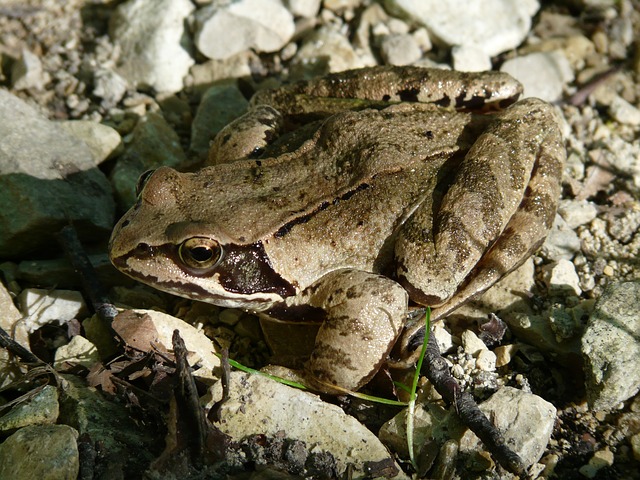
For many British wildlife species, winter is a time to bed down and conserve energy against the harsh cold and depleting resources. These species are known as heterothermic animals, and are able to fall into a deep sleep, by significantly lowering their heart rate and body temperature. This process helps them transition into a state where they can survive the winter months by spending as little energy as possible.
Such hibernating species include the hedgehog, many bat species, amphibian species (such as frogs, toads and newts), reptiles (such as slow worms and Britain’s three native snake species), and many insect species.
However, due to habitat destruction and intensive agricultural practices, hibernating species are finding it difficult to bed down during the brutal winter months, being one reason for their decline.
By providing a wild space for hibernating wildlife, you could help protect the UK’s hibernators. This can easily be done by leaving areas of your garden ‘wild’, being that you leave a space in your garden unkept/untidy, create log piles and leaf/debris piles, create minibeast houses and hedgehog houses, as well as leaving hedgerows intact and untidy.
It is also important that those with compost heaps check them for small hibernating wildlife, such as hedgehogs, before turning them, lest they bed down beneath them and are accidentally harmed.
Mating season for some
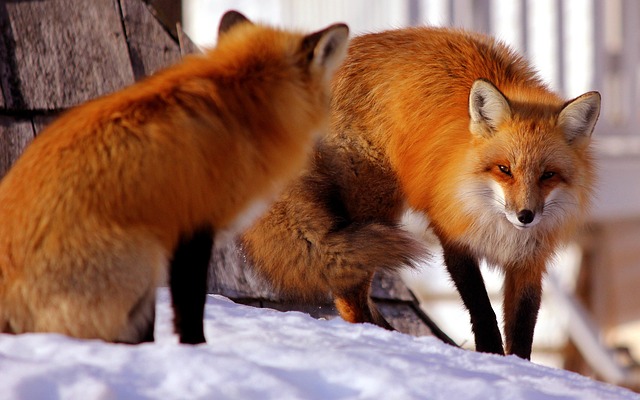
Winter is a spectacle for wildlife mating seasons. Many species of bird are on the wing to migrate to the UK for our milder winters, arriving around November, coming to make the most of conditions suitable for breeding and roosting.
The majority of resident birds also have their breeding season during the winter period, becoming more vocal, from tawny owl’s signature back and forward ‘twits’ and ‘twoos’, to the delicate fluting song of the woodlark. Even the well-beloved robin becomes more vocal during the winter, singing to mark their territory and call to their potential mates.
As well as their song, this Christmas celebrity adds a flash of colour against the stark wintery scene, their red plumage is emphasised, insulating and giving them greater bravado against rival males.
Most of either resident or migrant robin species can be spotted in woodland areas, urban areas, wetlands, coastal habitats and marshes. Many of the tit species (such as coal tits and blue tits) have their breeding season towards the end of winter/springtime, sticking to the dense woodland areas, as well as urban gardens for their favourite treat: fat balls, and bird feeders full of nutrient-rich seeds.
Coal tits often fly in large flocks together in search of food. Blue tits also stick close together in search of food and new territory for roosting sites. The winter months are more about finding the right territory and defending it for great tits, as they will use this territory for their breeding season in spring.
Plenty of mammal species have their mating season during winter, as well, including the cunning red fox. For just 3 – 6 days during winter, foxes have their brief mating season, where they become much more vocal and are most frequently spotted. You wouldn’t be able to miss a fox’s cry even if you tried; their call is somewhat gruesome, often described as ‘screams’, ‘howls’ and high-pitched ‘screeches’.
Grey squirrels often become louder during the winter months, chattering, ‘gleefully whining’ and males will emit warning calls to rival males. Grey squirrels have half of their breeding season between December and February, sticking to hardwood forests and dense woodland, where there are plenty of tree nuts, seeds and fruit to eat.
Red squirrels also have their breeding season in winter, normally on milder days in January, males usually chase the female for a time through the canopy of the trees (red squirrels rarely venture to the floor, always staying high in the trees, where they get all their food and shelter), in play – a courtship ritual – before the pair finally mate.
The female usually gives birth to her young during the early months of spring, April – May, in a nest known as a dray. Squirrel drays are twigs weaved together and lined with soft materials, such as grass and moss and can usually be seen high up in trees.
The squirrel young (kittens) are born blind and naked, completely reliant on their mother for survival. If the mother feels threatened, she will carry her young to another nest, usually situated quite far away from the original dray.
How we can help
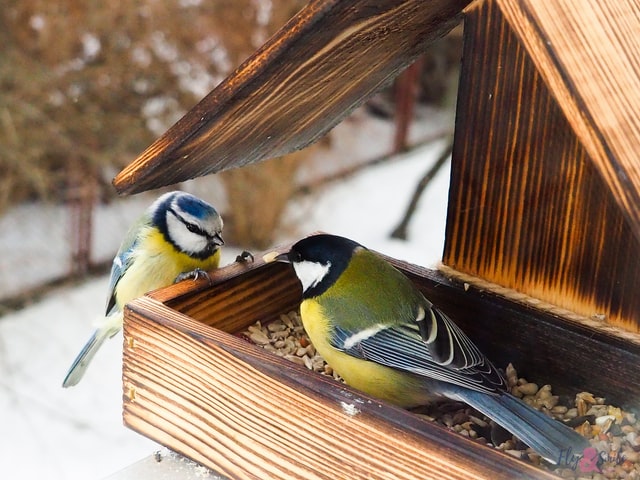
Here you can find a list of the best ways to help out wildlife, whilst also enjoying seeing them, this winter.
- Feed the birds! – winter is an especially difficult time of year for wildlife and survival rates are significantly reduced, especially due to habitat reduction. That is why it goes a long way to help out our feathery friends and provide some well needed feed during the harsh winter season.
Below is a list of foods that will hugely benefit birds this winter:
- Straight seeds
- Fat balls
- Seed mixes
- Mealworms
- Suet
- Bread (though not in large quantities, even though it helps insulate, it is low in nutritional value for birds)
Foods to avoid providing include:
- Milk
- Moldy foods (better to not risk the potential for birds to become infected by moldy food and fall ill)
- High-salt foods (can cause dehydration in birds)
- Fat from cooking food (can clog up a bird’s feathers and contain high concentrations of salt)
It’s also important to consider the following when leaving food out for birds:
- Positioning of the birdfeeders: place feeders in the open and away from spaces that are dense in vegetation, lest cats stalk the birds and pounce on them. There are different kinds of feeders that provide for different species – cage feeders are generally for smaller garden birds, bird tables and ground trays are for squirrels, pigeon species, thrush species, corvids etc.; try to accommodate for many different species. Hanging feeders in trees can also benefit birds, by giving them cover and allowing them to hide, though feeders in the open offer you a firsthand glimpse of the wildlife at our front door.
- Cleanliness: keeping food stations clean is beneficial towards keeping diseases from infecting birds that come to feed at your stations.
- Provide water: water is an important asset for the survival of wildlife in winter. Provide a small dish of fresh, unfrozen water on a regular basis, so the birds and other wildlife species do not become dehydrated after eating.
- Check for hibernating wildlife: hibernating wildlife tend to hide in unsuspecting places and so it is important that during the hibernating period that people are vigilant and create safe places for wildlife to bed down. Make sure to check compost heaps before turning them in! Also, ensure that if you are light fires outdoors from piles of logs/sticks that not hedgehogs are hiding within the pile, sleeping. It is also very helpful to dedicate places in your garden for wildlife to hibernate within, including creating log piles, leaf piles, small bug houses and hedgehog houses, as well as leaving spaces in your garden wild - leave ivy untidily in your garden and bramble and hedgerows unkept.
- Get involved with Earthwatch Europe: There are so many opportunities to help out through volunteering work, coming along to events, or participating in Naturehood by taking action for wildlife every week.
